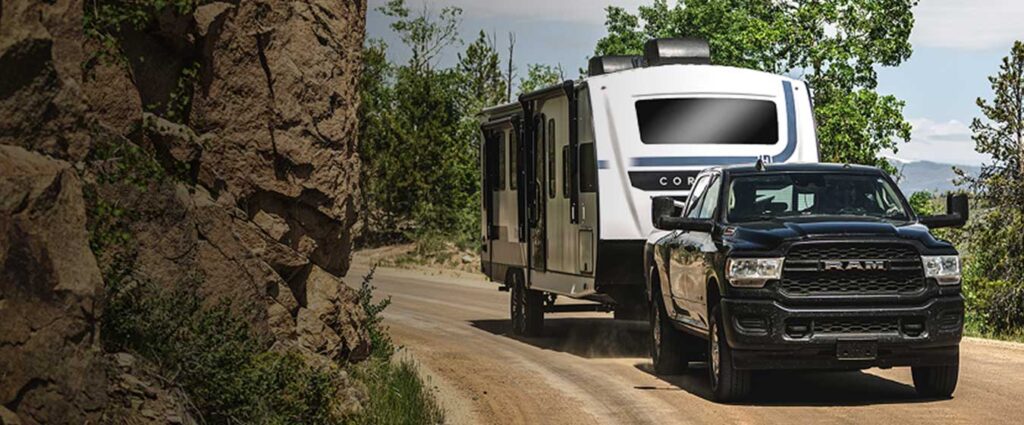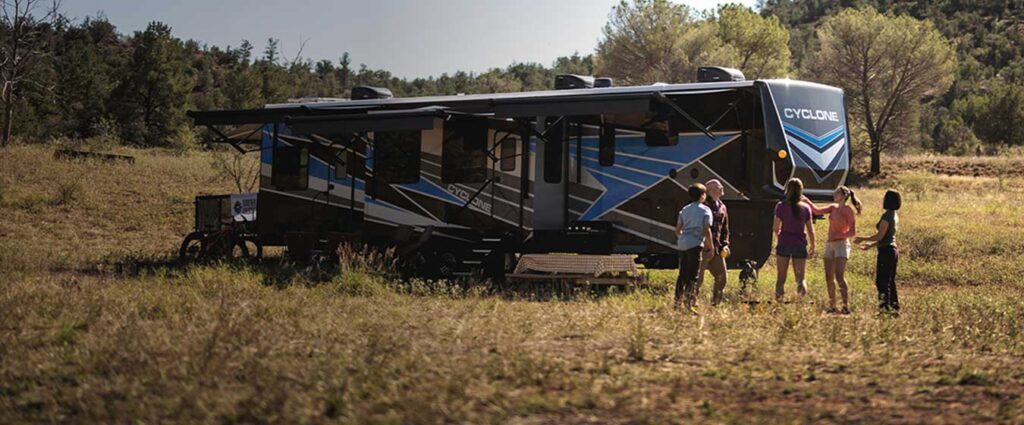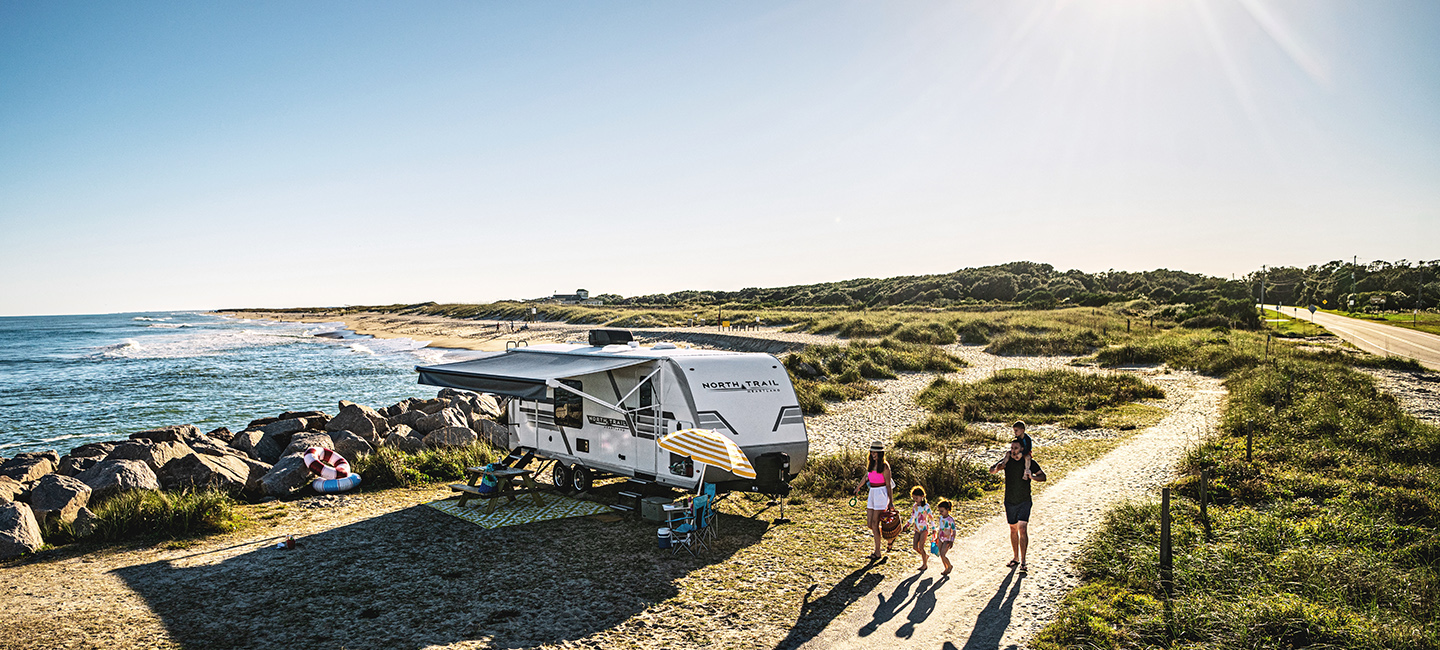
RV Towing Guide
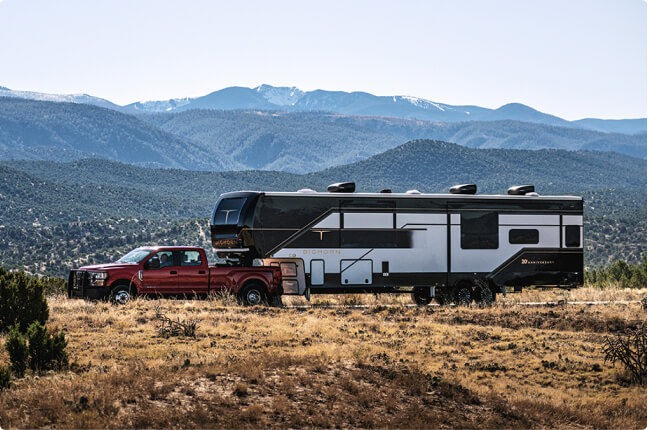
Choosing the Right Tow Vehicle for Your RV
When considering purchasing a towable RV—whether it’s a travel trailer, toy hauler, or fifth wheel—there are some crucial factors you need to take into account. It’s important to understand the ins and outs of towing to ensure your trips are safe and enjoyable. In this comprehensive towing guide, we’ll help walk you through the essential elements of towing, from choosing the right tow vehicle to selecting the proper hitch.
When purchasing an RV, it’s wise to choose your RV first and the tow vehicle second. This approach ensures that you select a vehicle that can safely handle the weight of your chosen RV. Before buying a tow vehicle, make sure you know your RV’s weight, including dry hitch weight (the RV’s weight when empty) and its cargo capacity (the maximum weight you can add, such as gear, food, and water).
With these numbers, you can confidently select a tow vehicle. It's crucial that the vehicle you choose has enough towing capacity to handle your RV, plus any added cargo.

The downward force your RV will exert on your tow vehicle’s hitch.

The RV’s weight before loading it with cargo.

Also known as GVWR. The maximum weight the RV can support when fully loaded.

The total weight of gear, water, food, etc., you can safely carry in your RV.


Understanding Payload & Capacity

The Importance of Payload Capacity
One of the most important aspects of RV towing capacity guidelines is making sure you have the proper tow vehicle. In order to do so, you’ll need to know both your vehicle’s towing capacity and payload capacity. You can usually find both of these in the owner’s manual or by consulting your dealer. Camping World has a helpful tool that allows you to find the exact year, make, and model of your vehicle and then calculate its tow capacity. You can also check out this video from the RV Safety & Education Foundation to better understand how to match trucks and trailers.
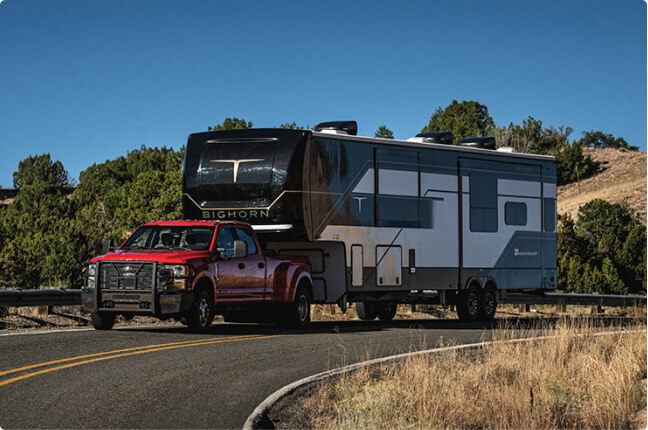
Having the Proper Tow Vehicle
You’ll need to know both your vehicle’s towing capacity and payload capacity. You can usually find both of these in the owner’s manual or by consulting your dealer. Camping World has a helpful tool that allows you to find the exact year, make, and model of your vehicle and then calculate its tow capacity.
In addition to towing capacity, you’ll need to understand your vehicle’s payload capacity, which includes the weight of passengers, gear, and the hitch weight of the RV. Properly calculating both your vehicle’s towing and payload capacities will ensure that you don’t exceed your vehicle’s safe limits.
Types of Hitches: Choosing the Best One for Your RV
In choosing your tow vehicle, you’ll also need to consider what type of RV tow hitch for a car is required to actually connect your RV to your vehicle. Some of the most common hitch options include weight-carrying, weight-distributing, gooseneck, and fifth wheel.
Once you’ve selected the perfect tow vehicle, you’ll need to consider which hitch to use for connecting your RV. There are a variety of hitches designed for different types of RVs, and Camping World has a good collection of articles that take you through some of these differences and the steps for hitching and unhitching various trailers. Here’s a breakdown of the four most common types:
1. Fifth Wheel Hitch
A fifth-wheel hitch is ideal for fifth-wheel trailers. It sits in the bed of a truck and connects via a kingpin mechanism. This hitch is designed to handle heavier loads (typically 16,000 to 30,000 pounds) by positioning the trailer’s weight directly over the truck’s rear axle.
2. Gooseneck Hitch
The gooseneck hitch works similarly to the fifth wheel but uses a ball and coupler mechanism instead of a kingpin. Gooseneck hitches are a good choice for heavy-duty fifth wheels, like toy haulers, because they allow for more weight (up to 30,000 lbs) and take up less space in the truck bed.
3. Weight Distribution Hitch
Used for travel trailers, this hitch helps to evenly distribute the weight of the RV across the tow vehicle’s axles. It’s a great option for heavier trailers, often weighing up to 15,000 pounds. A weight distribution hitch can also include a sway control system to reduce trailer sway.
4. Standard Bumper Hitch
A more basic option, this hitch is often used for smaller trailers, typically under 3,500 lbs. It attaches via a ball and coupler on the bumper of the tow vehicle. There are two main types of bumper hitches: fixed drawbars (permanently attached) and removable drawbars.
Essential Tips for Towing Your RV Safely
Now that you understand the basics of choosing a tow vehicle and hitch, here are some essential tips for safely driving with your RV:
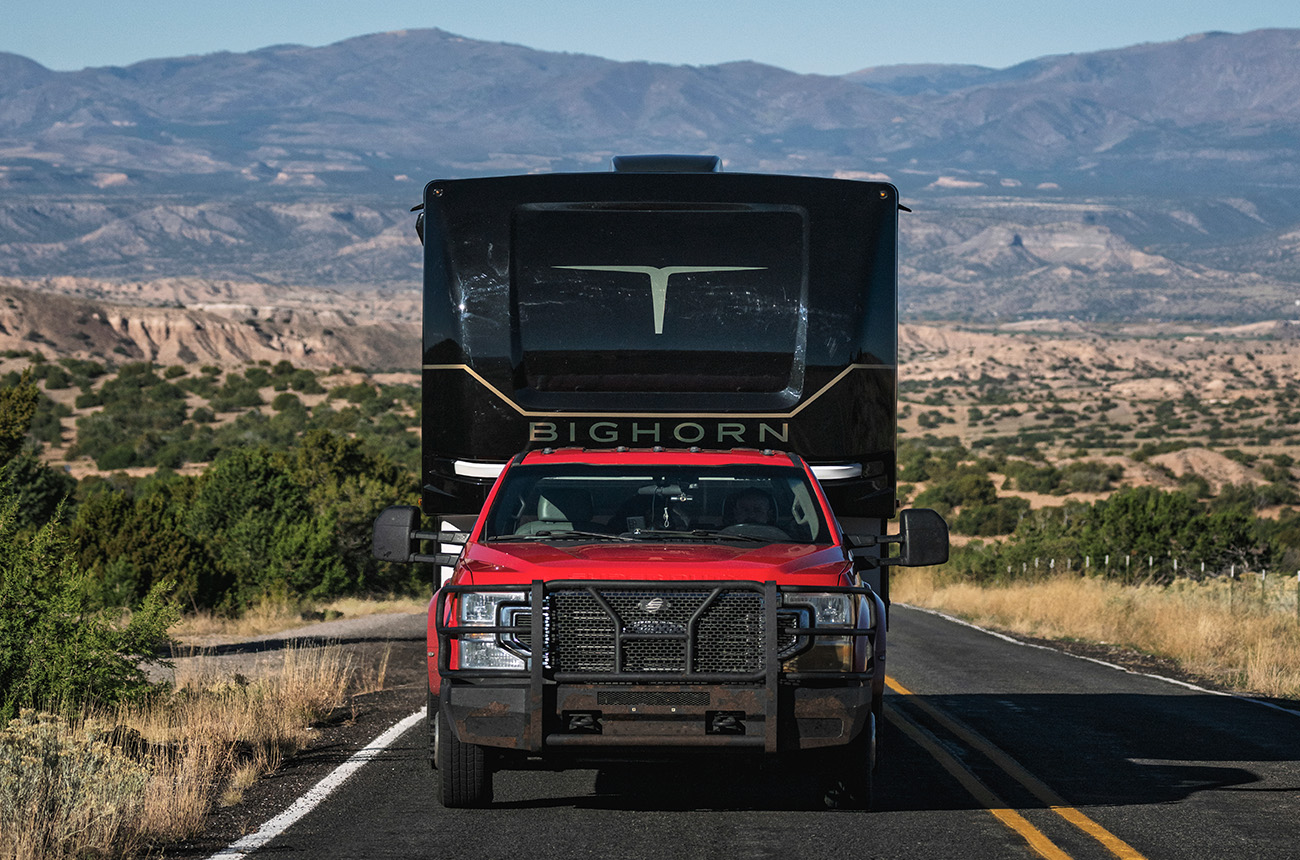
Towing an RV means extra weight, so always stay well below the speed limit. This will help you maintain control and stop safely.
Keep extra space between you and other vehicles to give yourself plenty of time to stop.
When turning, take wide, slow turns to avoid damaging the RV or hitting curbs.
A good trick is to place your hand at the bottom of the steering wheel. Move your hand left or right to steer the rear of the trailer in the desired direction.
Use the same hand-on-the-bottom steering technique. If possible, use a spotter to help guide you.

Common Questions to Ask Your Dealer
Before you commit to buying an RV, it’s important to ask the right questions of your dealer:
Can my vehicle tow this RV?
Be clear about your vehicle’s towing capacity, GVWR, and payload.
Do you offer hitch packages?
Check if the dealer provides any special hitch options and inquire about installation costs.
Can the dealer demonstrate hitching?
Ask the dealer to show you how to connect the RV to your vehicle, and consider recording the demonstration for future reference.
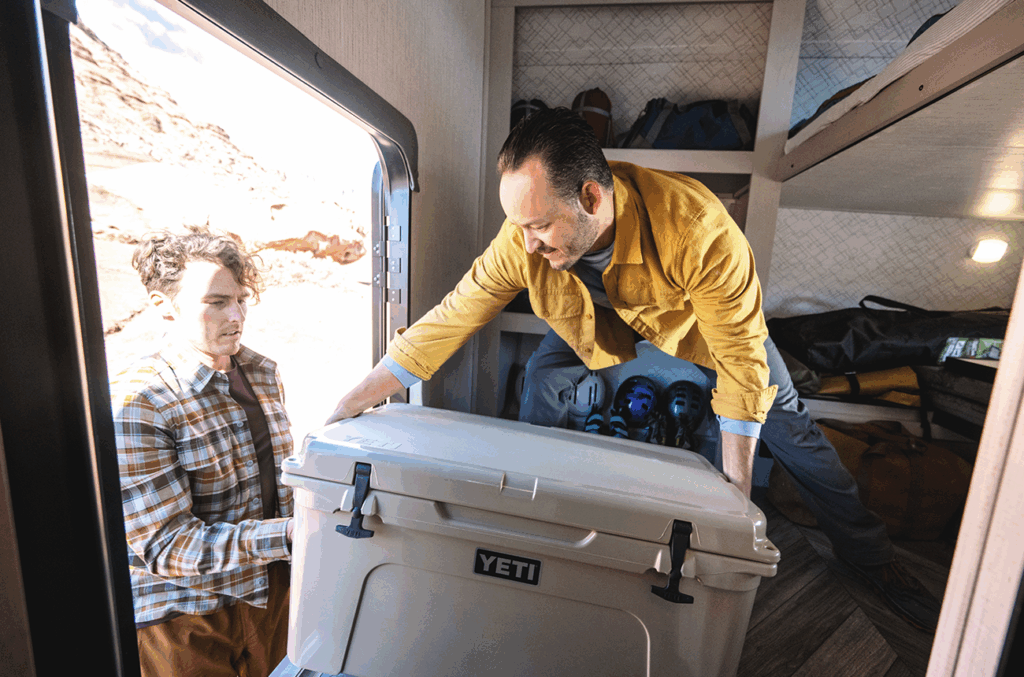
Towing Guides
When understanding towing requirements, there are a lot of factors to consider—weight, hitch type, and even the number of wheels can all play an important role. Luckily, there are resources out there to help make sense of it all. RV Safety has a printable towing guide that not only includes information on the different types of hitches and sidebars but also includes specifics for driving, packing, and braking with a trailer.
